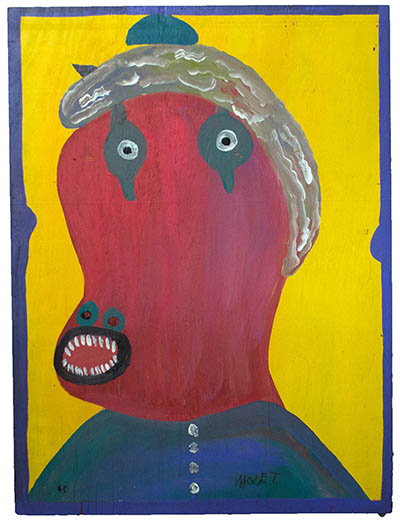
Exhibitions: Moses Tolliver KY
Moses Tolliver
Self-Portraits of Me
February 16 - March 25, 2017

Moses Tolliver, Self Portrait, ca. 1980, acrylic paint on plywood, 32 x 24 inches
Moses Tolliver
Self-Portraits of Me
February 16 – March 25, 2017
Institute 193, Lexington
“I paint to keep my head together,” Moses Ernest Tolliver once said to Lee Kogan. He was speaking in reference to a difficult period following an accident that permanently damaged his legs, leaving him unable to walk. Tolliver painted occasionally prior to the accident but was extraordinarily prolific after losing his freedom of movement. Tolliver’s art, despite his condition, rarely shows frustration or anger. In fact, his newfound sedentariness eventually brought people to him, creating opportunities for discussion, friendship, and commerce. He greeted visitors in his modest home in Montgomery, Alabama for more than 25 years, among them museum directors, scholars, and collectors, leading him to be one of the earliest African American vernacular artists to receive popular recognition.
One can certainly look at Tolliver’s work through the prism of the African American yard show tradition. Indeed, the first works, executed in the late 1960s, were hung from trees and attached to the fence around his yard, intentionally visible to his neighbors and members of the community. He also painted on roots, branches and other surfaces. After the accident, Tolliver’s paintings were mostly relegated to his house which functioned as a makeshift gallery before joining public and private collections.
Moses Tolliver: Self-Portraits of Me features eleven paintings executed in the 1970s and the late 1980s. While his well-known paintings of birds seem naturally to hint at transcendence and freedom, Tolliver’s paintings of himself, in contrast, seem haunted. The most intense self-portraits show red paint dripping from the figure’s lips, strong lines separating the bared, wide-open mouth, poised to scream or perhaps laugh. The gleaming white teeth evoke terror and power. Many figures feature lopsided or misshapen nostrils, eyes are different sizes and have an unnerving effect. Others seem more pacified surrounded by fields of pastel colors. Since the 1970s, Tolliver's palette has alternated between closely related color harmonies and sharply contrasting tones. Curly hair, buttoned up shirt, pipes, and sometimes, on the top of his head, a decorative, “handle-like” object that the artist called a "head bob" are reminiscent of how Tolliver actually looked. These details mark Tolliver’s grotesque figures as human.
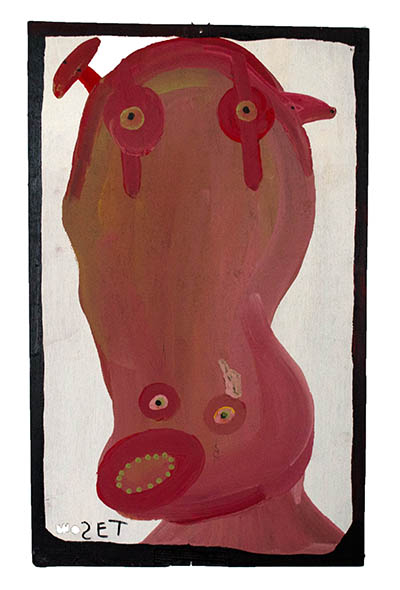
Moses Tolliver, Self Portrait, ca. 1980, house paint on plywood, 24 x 14.5 inches
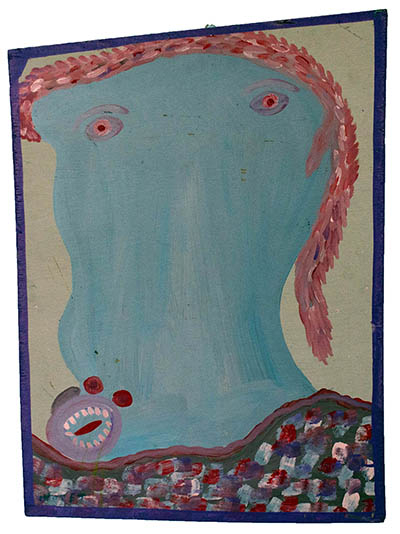
Moses Tolliver, Self Portrait, ca. 1980, house paint on plywood, 31 x 22 inches
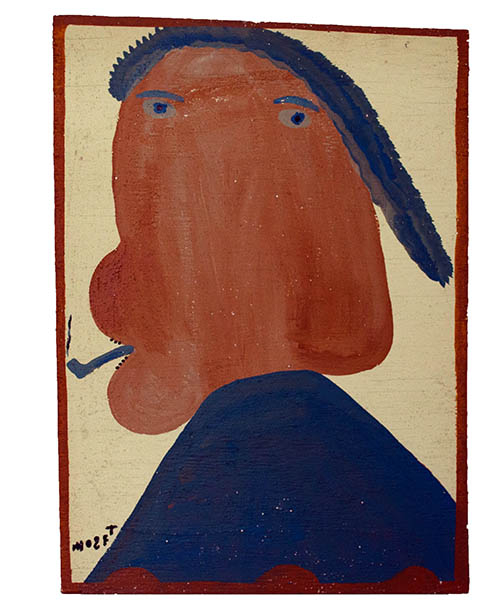
Moses Tolliver, Me smoking my pipe on pike road with cigar butts in it, ca. 1970, house paint on plywood, 26 x 20.5 inches
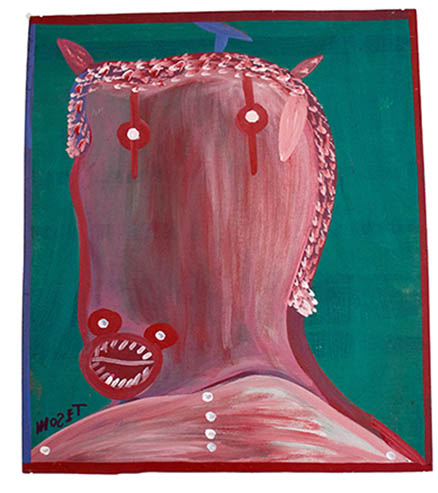
Moses Tolliver, Self Portrait, ca. 1980, house paint on plywood, 28.5 x 20 inches
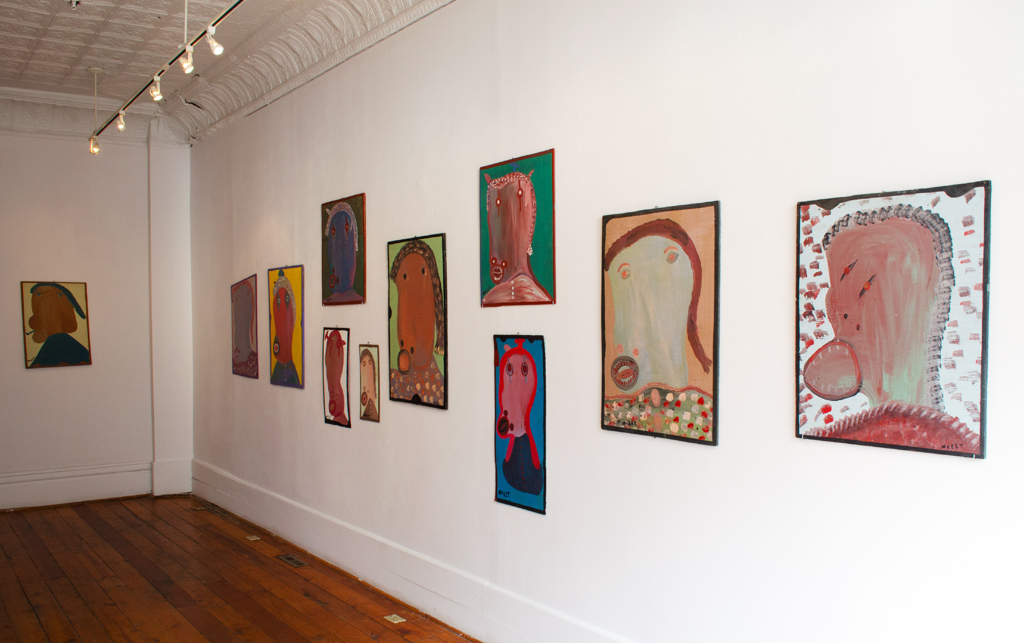
Installation View

